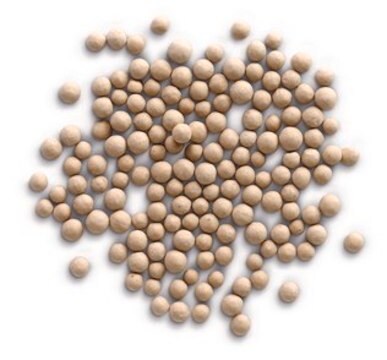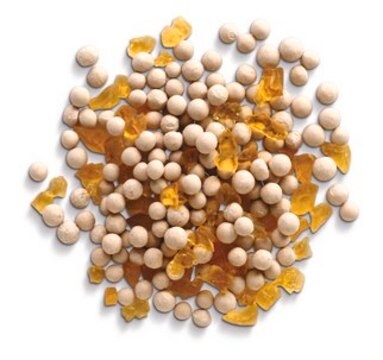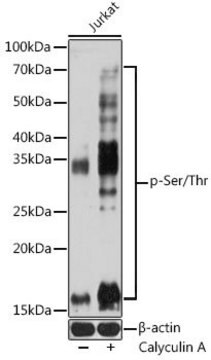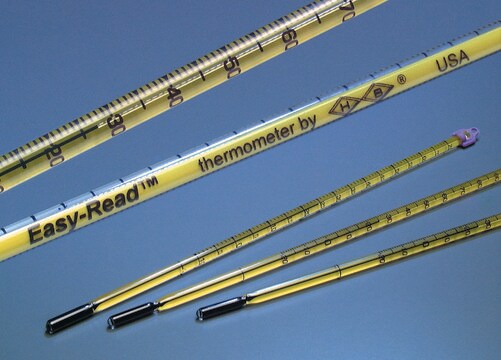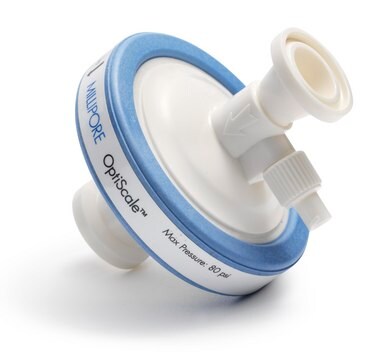MABF2811
Anti-Hemagglutinin Antibody, Influenza A virus H5N8 Antibody, clone 7H6C
Synonyme(s) :
HA-H5N8
About This Item
Produits recommandés
Source biologique
mouse
Niveau de qualité
Forme d'anticorps
purified antibody
Type de produit anticorps
primary antibodies
Clone
7H6C, monoclonal
Poids mol.
calculated mol wt 64.61 kDa
observed mol wt ~60 kDa
Produit purifié par
using protein G
Espèces réactives
virus
Conditionnement
antibody small pack of 100 μL
Technique(s)
affinity binding assay: suitable
immunofluorescence: suitable
western blot: suitable
Isotype
IgG1κ
Séquence de l'épitope
N-terminal half
Numéro d'accès Protein ID
Numéro d'accès UniProt
Température de stockage
2-8°C
Informations sur le gène
vaccinia virus ... HA(3654615)
Description générale
Spécificité
Immunogène
Application
Evaluated by Western Blotting with full-length, recombinant Hemagglutinin HA from the H5N8 strain of Avian influenza A virus.
Western Blotting Analysis (WB): A 1:500 dilution of this antibody detected full-length, recombinant Hemagglutinin HA from the H5N8 strain of Avian influenza A virus, but not the recombinant Hemagglutinin HA2.
Tested applications
Inhibition: A representative lot inhibited Hemagglutinin activity in Influenza A virus H5N8 in (Cheng, Y-C. and Chang, SC. (2021). Appl Microbiol Biotechnol. 105(1); 235-245).
Electron Microscopy: 45 g/mL from a representative lot detected Hemagglutinin, Influenza A virus H5N8 in H5/H6/H7 trivalent VLPs. (Data provided by Dr. Hui-Wen Chen (Department of Veterinary Medicine, National Taiwan University).
Immunofluorescence Analysis: 4.5 µg/mL from a representative lot detected Hemagglutinin, Influenza A virus H5N8 in Recombinant baculovirus-infected Sf21 cells (Data provided by Dr. Hui-Wen Chen (Department of Veterinary Medicine, National Taiwan University).
Western Blotting Analysis: A representative lot detected Hemagglutinin, Influenza A virus H5N8 in Western Blotting applications (Cheng, Y-C., and Chang, SC. (2021). Appl Microbiol Biotechnol. 105(1); 235-245).
Affinity Binding Assay: A representative lot detected Hemagglutinin, Influenza A virus H5N8 in Affinity Binding applications (Cheng, Y-C., and Chang, SC. (2021). Appl Microbiol Biotechnol. 105(1;235-245).
ELISA Analysis: A representative lot detected Hemagglutinin, Influenza A virus H5N8 in ELISA applications (Cheng, Y-C., and Chang, SC. (2021). Appl Microbiol Biotechnol. 105(1); 235-245).
Note: Actual optimal working dilutions must be determined by end user as specimens, and experimental conditions may vary with the end user.
Forme physique
Stockage et stabilité
Autres remarques
Clause de non-responsabilité
Vous ne trouvez pas le bon produit ?
Essayez notre Outil de sélection de produits.
Code de la classe de stockage
13 - Non Combustible Solids
Classe de danger pour l'eau (WGK)
WGK 1
Point d'éclair (°F)
Not applicable
Point d'éclair (°C)
Not applicable
Certificats d'analyse (COA)
Recherchez un Certificats d'analyse (COA) en saisissant le numéro de lot du produit. Les numéros de lot figurent sur l'étiquette du produit après les mots "Lot" ou "Batch".
Déjà en possession de ce produit ?
Retrouvez la documentation relative aux produits que vous avez récemment achetés dans la Bibliothèque de documents.
Notre équipe de scientifiques dispose d'une expérience dans tous les secteurs de la recherche, notamment en sciences de la vie, science des matériaux, synthèse chimique, chromatographie, analyse et dans de nombreux autres domaines..
Contacter notre Service technique


